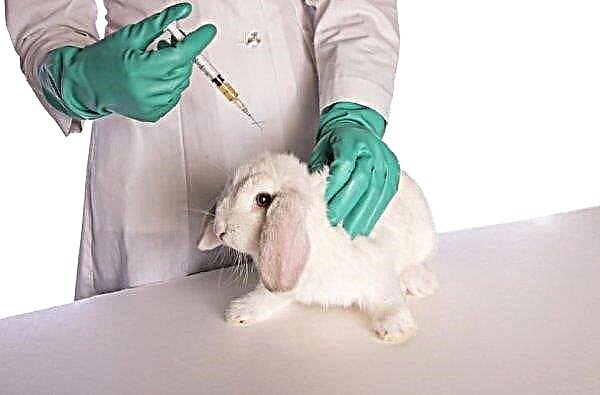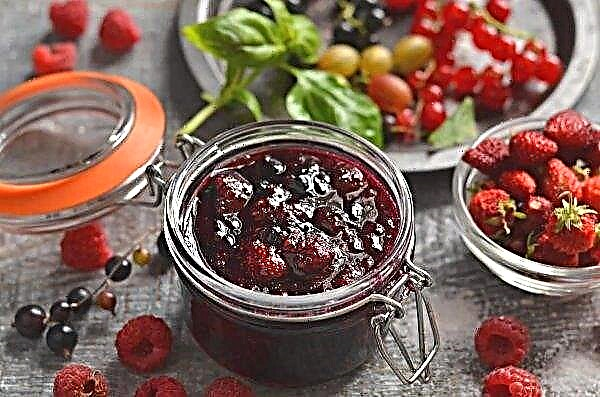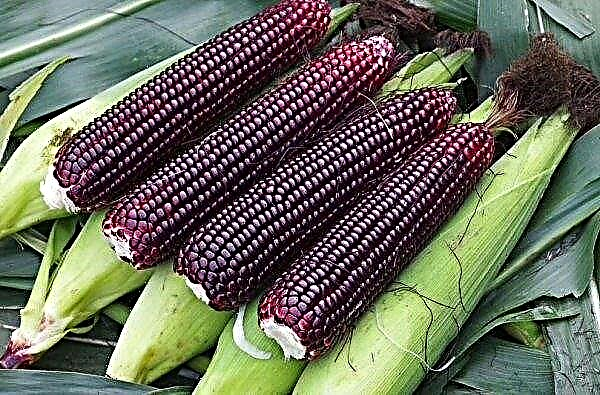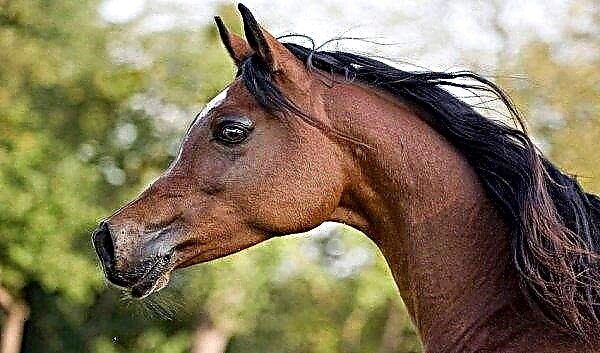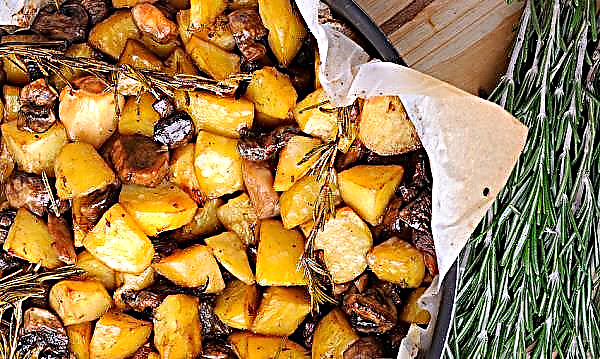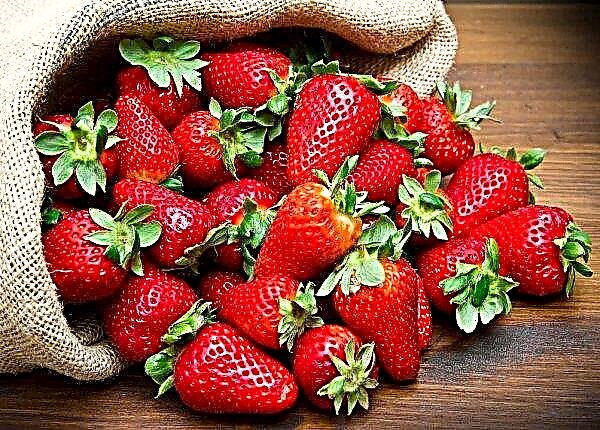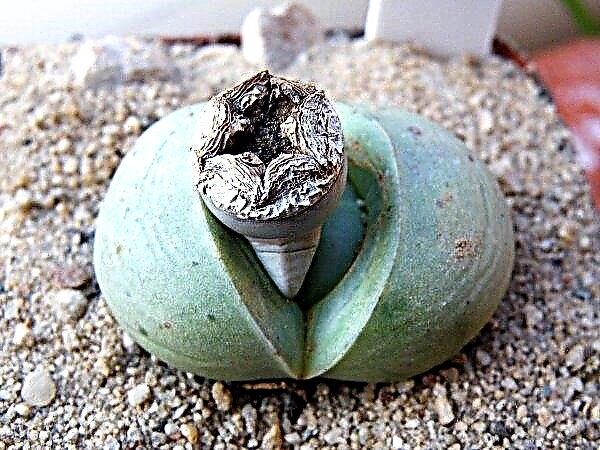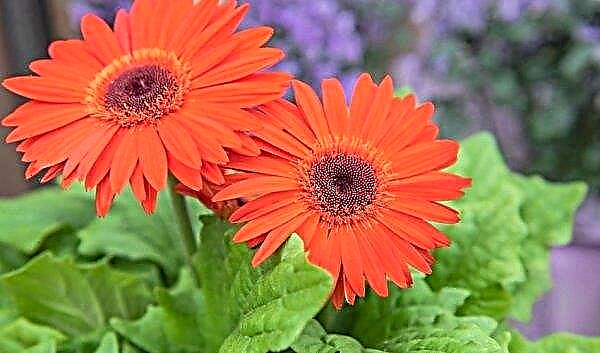Rhododendron has a high decorative effect, for which he has long been fond of gardeners and landscape designers. Among the many varieties of culture, the hybrid variety Queen Jadwiga (Krolowa Jadwiga, second name Royal Butterfly) has particularly attractive qualities. Read more about this plant, as well as the rules for its cultivation, read below.
Grade description
The plant of the above variety is included in the Royal Rhododendrons group, and got its name in honor of the Polish monarch Jadwiga.
Variety Description:
- evergreen shrub, 1.5 to 2 m high;
- crown in diameter reaches 1 m, densely branched, wide, hemispherical in shape;
- stiff shoots, lignified;
- leaves are leathery, dark green, dense structure, ovoid;
- flowers are collected in domed inflorescences, pale pink with a burgundy central upper petal.
Flowering begins in early June and lasts about three weeks, may be repeated (not annually) - in the fall. The plant prefers acidic (pH in the range 4.5–5.0), well-drained soils. It is very sensitive to drought, therefore, when growing, it needs sufficient watering.
In relation to diseases and pests, the variety is very resistant. Occasionally, it can be affected by fungi and some parasites (aphids, spider mites, bugs). To avoid this, it is imperative that preventive measures be taken at the end of the season.
Did you know? In the wild, rhododendrons can grow at an altitude of 6,000 m above sea level.
Winter hardiness
Krolowa Jadwiga is characterized by high winter hardiness. Plants are able to withstand frosts down to -30 ° C. Shelter is required only in the case of growing bushes in open areas unprotected from the wind.

But if the place is chosen taking into account the natural features of the rhododendron, he will need additional protection only during the first 3-5 years after planting in open ground. According to the data of Polish breeders, the plant can be grown in the climatic zone of frost resistance 4 and in warmer ones.
Features of planting and care
The cultivation of the considered variety of rhododendrons will not cause trouble. The main thing is to take into account its botanical features. The place is worth choosing in the shade or partial shade. It must be protected from draft. Particular attention should be paid to the quality of the soil, so you need to pre-prepare it.
Landing is best done in the spring, before the swelling of the kidneys. Prepare the site begin in the fall. At this stage, digging is carried out to a depth of 40 cm. Next, for each square meter of area, 20 kg of compost, 10 kg of peat and 10 kg of soil from coniferous forest are brought. This will achieve the required level of acidity. Immediately after the introduction of nutrients, re-digging is carried out to the same depth as originally.Did you know? Large-leafed rhododendron is the state symbol of Washington.

The purchase of seedlings is carried out in nurseries. Rhododendrons are sold in containers. But they are not being planted with a ready-made earthen lump. A day before moving to open ground, seedlings are watered.
The next day, they are carefully removed from the containers and immersed in tanks with water at room temperature. Soak until air bubbles no longer appear on the surface of the liquid. Then gently wash off the rest of the earth from the roots, and carry out the landing.
2–3 hours before the plants move to the open ground, they dig holes 40 cm deep and 60 cm in diameter. If the soil is clayey, dense, then the dimensions of the hole are 10 cm less. When several rhododendrons are planted at once, the distance between the holes is left within 1– 1.5 m When choosing plants, they must be evaluated for dry shoots, traces of rot or uneven staining of bark, foliage. Next, they prepare nutritious soil from peat and clay mixed 4: 1. To this composition add 0.5 kg of soil from coniferous forest (you can take a ready-made substrate for heather) and the same amount of rotted compost. On loams, sand is added instead of clay. It is also mixed with peat, but in a ratio of 3: 2.
When choosing plants, they must be evaluated for dry shoots, traces of rot or uneven staining of bark, foliage. Next, they prepare nutritious soil from peat and clay mixed 4: 1. To this composition add 0.5 kg of soil from coniferous forest (you can take a ready-made substrate for heather) and the same amount of rotted compost. On loams, sand is added instead of clay. It is also mixed with peat, but in a ratio of 3: 2.
Landing algorithm.
- To line the bottom of the prepared deepening of 15 cm expanded clay - this will be the drainage layer.
- Put 5 cm of nutrient substrate.
- Place the plant in a pit.
- Fill the voids with soil to the root neck.
- Seal the soil in the near-stem circle with your hands. Pour 5 liters of water at room temperature into the well.
- Mulch the surface of the earth around the plant with a peat-compost mixture (1: 1 ratio).

Further plant care consists in timely watering, weed removal, as well as in preparation for the winter period, sanitary pruning and fertilizing.
Plants are quite sensitive to lack of moisture. This has a particularly negative effect on young seedlings. Watering should be carried out from spring to autumn. The last moistening of the soil is done 2 weeks before the cold snap. The schedule for the implementation of manipulation is completely dependent on the climatic conditions of a particular region.
Important! The root system of rhododendron is located in the surface layers of the soil. In this regard, violating the integrity of the soil is not recommended.
Plants are watered daily in a drought, introducing 10 liters of acidified water under each, for which 1 tbsp. Is added to the indicated amount of liquid. l vinegar (9%) concentration or 3-5 grams of citric acid. In spring and autumn, when enough precipitation occurs, the rate of humidification is reduced to 2 times a week, without changing the volume of fluid.
If there is a need to remove weeds, then you need to do this only manually. Loose the mulch without grabbing the soil. To maintain optimal microflora and importance, it is constantly updated, replenishing the settled layer. To this end, the surface of the trunk circle is filled with rotted foliage, compost, peat or needles to a height of 5 cm.
Fertilizers begin to be applied from the second year of life of the plant on the site. In the beginning of May, before the buds appear, they add nitrogenous top dressing. For 10 l of water add 1 tbsp. urea and potassium sulfate. One copy requires 3 liters of working fluid.
At the end of Maywhen buds are already present on the plant, Agricola for flowering plants and potassium sulfate are used. fertilizers. The flow rate of the working solution per plant is from 3 to 5 liters.
Immediately after flowering, approximately at the end of June - the beginning of July, 1 tablespoon is added per 10 liters of water superphosphate and potassium sulfate. Fluid flow rate - 3 liters per plant. Upon repeated flowering, at the end of it, the above solution is also added.
Pruning is carried out in spring and autumn. Manipulation involves the removal of shoots that have been damaged or grow inside the crown. Also during flowering, wilted inflorescences are regularly cut.
Winter preparations begin 3 weeks before the cold weather. At this stage, remove all the mulch. Spray the soil and plants with 1% solution of copper sulfate. A week later, the last watering is carried out. As soon as moisture is absorbed into the ground, spread a layer of mulch 10-15 cm high. When snow falls, snowdrifts with a height of about 30 cm are necessarily built from it.
Important! If rhododendrons are covered with non-woven materials for the winter, then they begin to remove the shelter in the spring gradually - once every 3 days, one layer. This approach will help protect the bushes from sunburn.
For adult plants, the described manipulations are enough to winter without loss. Young seedlings that have not reached the age of 4-5 years are additionally covered with spruce branches. For this, coniferous branches are laid between the shoots of rhododendron. At a time when the temperature begins to drop to 0 ° C, pull lutrasil or burlap on the bushes. Fix the material with brackets.

Use in garden design
The Rhododendron Queen Jadwiga has attractive external data. In landscape design, it can be combined in different compositions with conifers, rose bushes. This representative of the flora will be in perfect harmony in a rocky garden, on alpine slides with junipers, heather, flowering perennials. It looks no less profitable in single landings. Hedges from flowering rhododendrons also look spectacular.
Queen Jadwiga is a variety of decorative hybrid rhododendrons belonging to the “royal collection”. The plant is attractive not only for its external qualities, but also for its unpretentious care and high winter hardiness, which makes it possible to cultivate it even in cool regions.


